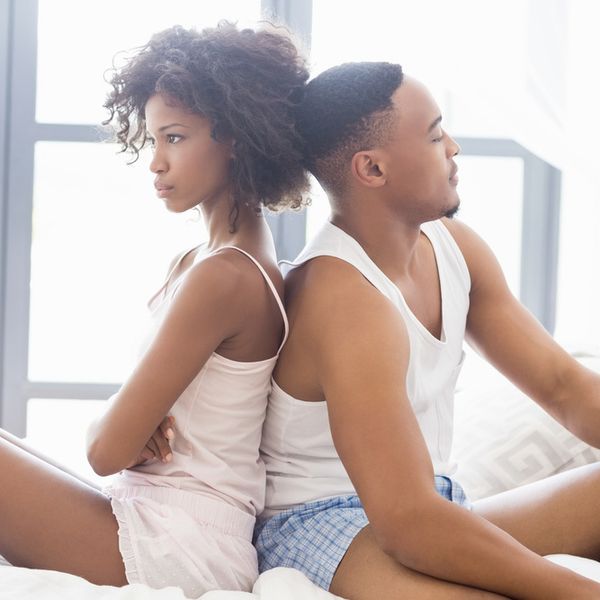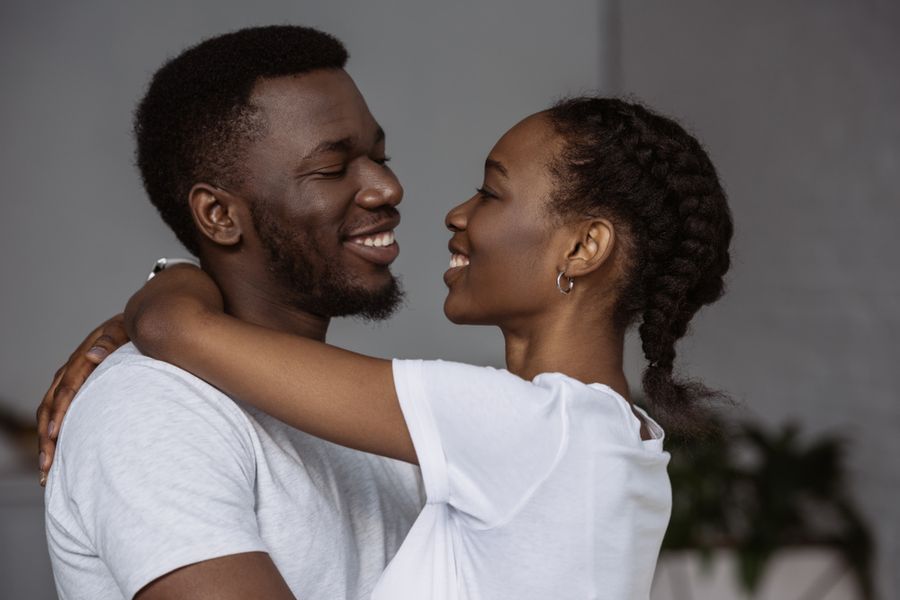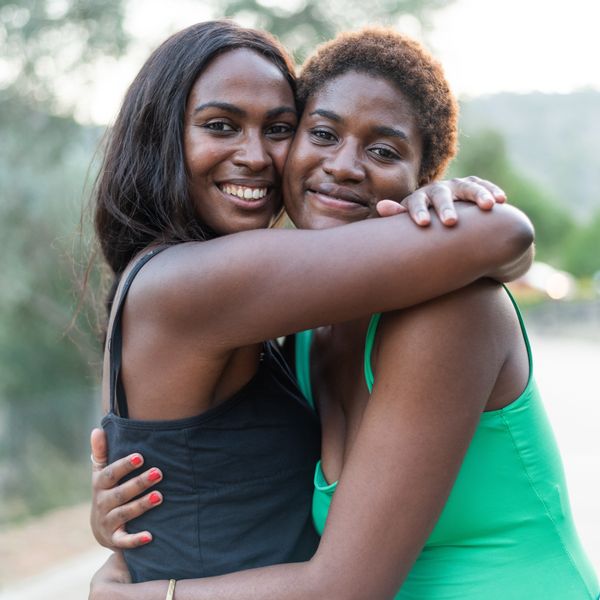
Navigating relationships can be a complex and layered experience. Whether we are in a romantic relationship or developing a friendship, there are so many intricacies and nuances to consider. However, there are ways to dig deeper and connect more intimately with a romantic partner, as well as with yourself. One thing that is unexpected in relationships is what you learn about yourself. Sometimes it is these lessons that give you the greatest insight into your dating patterns.
Besides identifying your love language, it is also important to look into your attachment style, or in other words, how you connect with others. Before we go further, let's get a working definition of attachment styles. According to research conducted by Dr. Cindy Hazan and Dr. Phillip Shaver, attachment is "a biosocial process by which affectional bonds are formed between adult lovers, just as affectional bonds are formed earlier in life between human infants and their parents." So what does this all mean? Basically, how you were raised and how your parents reared you determines how you attach to people in relationships later in life.
This is commonly referred to as the attachment theory.
So why is it important to understand your attachment style in relationships?

Shutterstock
According to Dr. Ayanna Abrams, a licensed clinical psychologist, "Knowing your attachment style is important because it helps you understand how you organize your world. It helps you to understand how you view yourself in relation to other people and how you tend to view other people in relation to yourself." In close intimates relationships, this is crucial because it can explain why you might push a partner away or why you may cling too closely to people. Depending on which attachment style you lean towards, you can gain insight into the way you bond with people and reveal patterns around dating habits.
There are four attachment styles that can be identified between adults in a relationship: secure, anxious-preoccupied, dismissive-avoidant, and fearful-avoidant.
How you fall into each category depends on a few factors: how you engage and think about closeness and emotional intimacy, how you communicate, how you listen and understand your emotions as well as your partners, your conflict resolution skills, and the expectations you place on your partner or relationships. Each attachment style has a distinct underlying basic characteristic that involves closeness or how comfortable you are being intimate and emotionally close with another person. It also involves a default to dependent/avoidant behavior. Simply put, dependent/avoidant behavior refers to how comfortable you feel depending on people or having people depend on you. Lastly, there is a component of anxiety. This means the amount of fear you have around a partner rejecting or abandoning you.
What are each of the attachment styles?

Shutterstock
Secure Attachment: In this attachment style people are low avoidance and low anxiety. They feel safe in relationships, are comfortable with intimacy, are not worried about rejections, and are not preoccupied with relationships. People in this category tend to be more satisfied with their relationships. As a child, they view their parents as a secure base and feel they can venture out into the world and explore independently. This is also displayed in their adult relationships with a romantic partner where they feel secure and connected while allowing themselves and partner to move freely. They often are able to support their partners when they are troubled. These relationships are honest, open, and equal. Both partners feel independent and loving towards one another. People in this category do not participate in a "Fantasy Bond", this is the belief that connections provide a false sense of security. Couples that fantasy bond do not engage in real acts of love but act in a more robotic, routine way that puts distance between them and actually emotionally relating.
Anxious-Preoccupied: This attachment style is low in avoidance and high in anxiety. People in this category crave closeness and intimacy from their partners but are extremely insecure in their relationships. They are often searching for their partner to rescue or complete them as a person. This can manifest in behaviors that are seeking safety by becoming very clingy but in turn, push away their partner. Even with their desperate and insecure actions, the behaviors more times than none, only serve to exacerbate their own manufactured fears. When they become possessive towards their partners, any independent actions exhibited by their partner may only confirm their fears.

Shutterstock
Dismissive-Avoidant: People who fall into this attachment style are high in avoidance and low in anxiety. They are normally uncomfortable with being close or intimate with other people. They also value their independence and freedom and oftentimes do not worry about their partner's availability. There is a tendency for people in this category to be emotionally distant from their partners. They can appear to be self-centered and only focused on themselves while attending to their own needs. Something else unique to this group is their ability to shut down in emotional situations and turn their feelings off with little to no reaction.
Fearful-Avoidant: This attachment style is high in both avoidance and anxiety. Here, people feel not only uncomfortable with intimacy but worry that their partner is not committed or does not love them. Essentially they feel a state of being afraid of being both too close or too distant from others. They often have trouble keeping their feelings under control, not being able to avoid anxiety but also not being able to run away from their feelings. Unpredictability in their moods is common with fearful-avoidant people. They struggle with wanting to land securely with their partner but also feeling this same person will hurt them. They almost never get their emotional needs met when they are in a relationship.
When you identify what your attachment style is, what's next?
 Shutterstock
ShutterstockIf you find that you are securely attached, great! Continue to move forward in this way with people who respect and honor you while still building healthy relationships. However, if you find that you are in an attachment style that is undesirable or not beneficial, can you change your attachment style? The answer is yes. Dr. Niecie Jones, a psychotherapist, suggests doing reflexivity work, or inner reflection, to understand where certain behaviors and patterns may have begun.
Also when doing the work towards changing your attachment style, she adds, "Think of different people in your life, could be mentors, could be friends, who seem to be more open with their boundaries or with their trusting. Find certain things that they are able to say or do as habits that have helped them be more trusting and try to adapt those into your life." So there is hope. If you are thinking about starting this work, look to yourself first.
Where do you go for help to develop a new attachment style?

Shutterstock
There are several types of resources that can help you discover a new attachment style. Ranging from books to actual in-person therapy sessions, there is a wealth of information. For some helpful reading to learn more about how attachment styles affect your love life, check out Hold Me Tight by Dr. Sue Johnson. In it, a therapy called emotionally-focused couple therapy is discussed and how your emotional attachments to your partner are the same as a child to a parent. This book also offers ways to save your relationships by "re-establishing emotional connection," with others.
However, both Dr. Abrams and Dr. Jones agree that help from a professional therapist is ideal in recognizing patterns and developing tools to engage yourself as well as others. Also, if you are in relationships and trying to work through these obstacles, it can be a difficult process. It a good idea to have a professional observe what is going on to identify the attachment styles that may be causing blocks in your romantic partnerships as well as any other relationships you might have in your life. The main key to success in relationships though is both people have to completely invest in the process.
Join our xoTribe, an exclusive community dedicated to YOU and your stories and all things xoNecole. Be a part of a growing community of women from all over the world who come together to uplift, inspire, and inform each other on all things related to the glow up.
Featured image by Shutterstock
- How To Love Without Being Clingy - xoNecole: Women's Interest ... ›
- WTF is a Frozen Five? - xoNecole: Women's Interest, Love, Wellness ... ›
- Turning Fearful Love Into Fearless Love - xoNecole: Women's ... ›
- Shan Boody Dating, Frozen Five - xoNecole: Women's Interest, Love, Wellness, Beauty ›
- Relationship Anxiety & How Anxiety Shows Up In Relationships - xoNecole: Lifestyle, Culture, Love, Wellness ›
Eva Marcille On Starring In 'Jason’s Lyric Live' & Being An Audacious Black Woman
Eva Marcille has taken her talents to the stage. The model-turned-actress is starring in her first play, Jason’s Lyric Live alongside Allen Payne, K. Michelle, Treach, and others.
The play, produced by Je’Caryous Johnson, is an adaptation of the film, which starred Allen Payne as Jason and Jada Pinkett Smith as Lyric. Allen reprised his role as Jason for the play and Eva plays Lyric.
While speaking to xoNecole, Eva shares that she’s a lot like the beloved 1994 character in many ways. “Lyric is so me. She's the odd flower. A flower nonetheless, but definitely not a peony,” she tells us.
“She's not the average flower you see presented, and so she reminds me of myself. I'm a sunflower, beautiful, but different. And what I loved about her character then, and even more so now, is that she was very sure of herself.
"Sure of what she wanted in life and okay to sacrifice her moments right now, to get what she knew she deserved later. And that is me. I'm not an instant gratification kind of a person. I am a long game. I'm not a sprinter, I'm a marathon.
America first fell in love with Eva when she graced our screens on cycle 3 of America’s Next Top Model in 2004, which she emerged as the winner. Since then, she's ventured into different avenues, from acting on various TV series like House of Payne to starring on Real Housewives of Atlanta.

Je-Caryous Johnson Entertainment
Eva praises her castmates and the play’s producer, Je’Caryous for her positive experience. “You know what? Je’Caryous fuels my audacity car daily, ‘cause I consider myself an extremely audacious woman, and I believe in what I know, even if no one else knows it, because God gave it to me. So I know what I know. That is who Je’Caryous is.”
But the mom of three isn’t the only one in the family who enjoys acting. Eva reveals her daughter Marley has also caught the acting bug.
“It is the most adorable thing you can ever see. She’s got a part in her school play. She's in her chorus, and she loves it,” she says. “I don't know if she loves it, because it's like, mommy does it, so maybe I should do it, but there is something about her.”
Overall, Eva hopes that her contribution to the role and the play as a whole serves as motivation for others to reach for the stars.
“I want them to walk out with hope. I want them to re-vision their dreams. Whatever they were. Whatever they are. To re-see them and then have that thing inside of them say, ‘You know what? I'm going to do that. Whatever dream you put on the back burner, go pick it up.
"Whatever dream you've accomplished, make a new dream, but continue to reach for the stars. Continue to reach for what is beyond what people say we can do, especially as [a] Black collective but especially as Black women. When it comes to us and who we are and what we accept and what we're worth, it's not about having seen it before. It's about knowing that I deserve it.”
This interview has been edited for length and clarity.
Let’s make things inbox official! Sign up for the xoNecole newsletter for love, wellness, career, and exclusive content delivered straight to your inbox.
Feature image by Leon Bennett/WireImage
The first time I heard about burn journaling was during my interview with Dreka Gates. She shared a self-care practice a holistic doctor recommended involving writing “whatever is pissing me off” and then burning the paper afterwards. According to the model, burning the page neutralizes the negative energy.
This practice piqued my interest, so I decided to do some research. I ran across a few articles about the practice and what exactly it entails. However, I soon remembered that I actually practiced burn journaling over a year ago and again last year.
The first time I did it, I was among a group of ladies and we were encouraged to write down our feelings in our journals. Afterwards, we huddled around and one by one burned our pages with some ladies even revealing what they wrote. It was a beautiful moment and a great way to support each other.
The second time I did burn journaling, I was by myself. I was reading Calling In The One and one of the practices involved writing down the things I wanted to let go of and burning it. I had Cleo Sol’s “Know That You Are Loved” playing in the background on repeat while I burned the pages in my apartment bathroom.
What Does Burn Journaling Do?
Based on my experience and others' explanations, burn journaling is a cathartic practice. The act of burning serves as an emotional release of past traumas, old thoughts, and negative feelings. It’s also a way to say goodbye and/ or forgive.
Types of Burn Journaling
There are different examples of burn journaling: Burning journals after writing, burning letters and burning lists.
Burn Journals
As stated before, you can write in a journal and burn it afterwards. It’s up to you if you burn it page by page or wait until you fill the journal up and burn it altogether. There are journals you can buy for the sole purpose of burning them afterwards.

Maskot/ Getty Images
Burn Lists
This technique involves writing a list of things you want to let go of and then burning it. Burning the list symbolizes the release of those things.
Burn Letters
Another example are burn letters. For this technique, you write a letter to someone that you either want to forgive or let go of, but instead of sending it to them, you burn it.
Safety Precautions
If you do decide to try this practice, make sure to be safe. Use a fireproof bowl for burning and never leave it unattended. Alternatively, you can shred the pages.
If you’re in Atlanta and want to try burn journaling, meet me this Sunday for Burn Journaling & Walk.
Let’s make things inbox official! Sign up for the xoNecole newsletter for love, wellness, career, and exclusive content delivered straight to your inbox.
Feature image by Mikhal Dmitriev/ Getty Images










